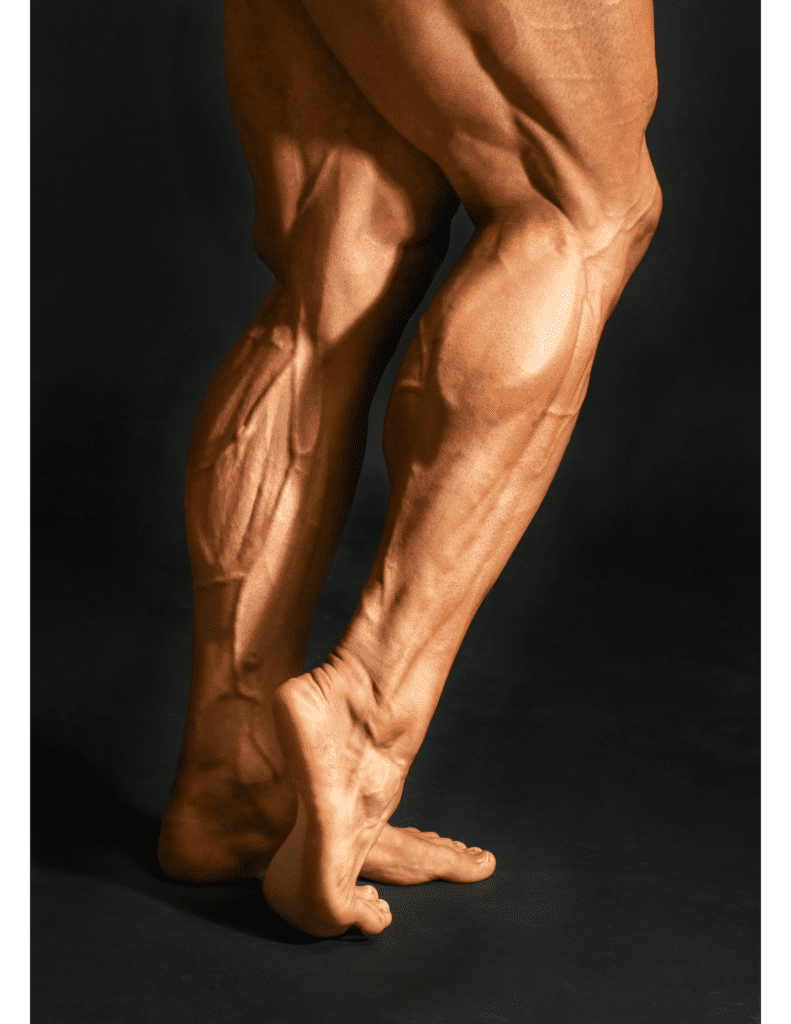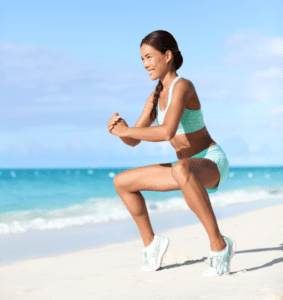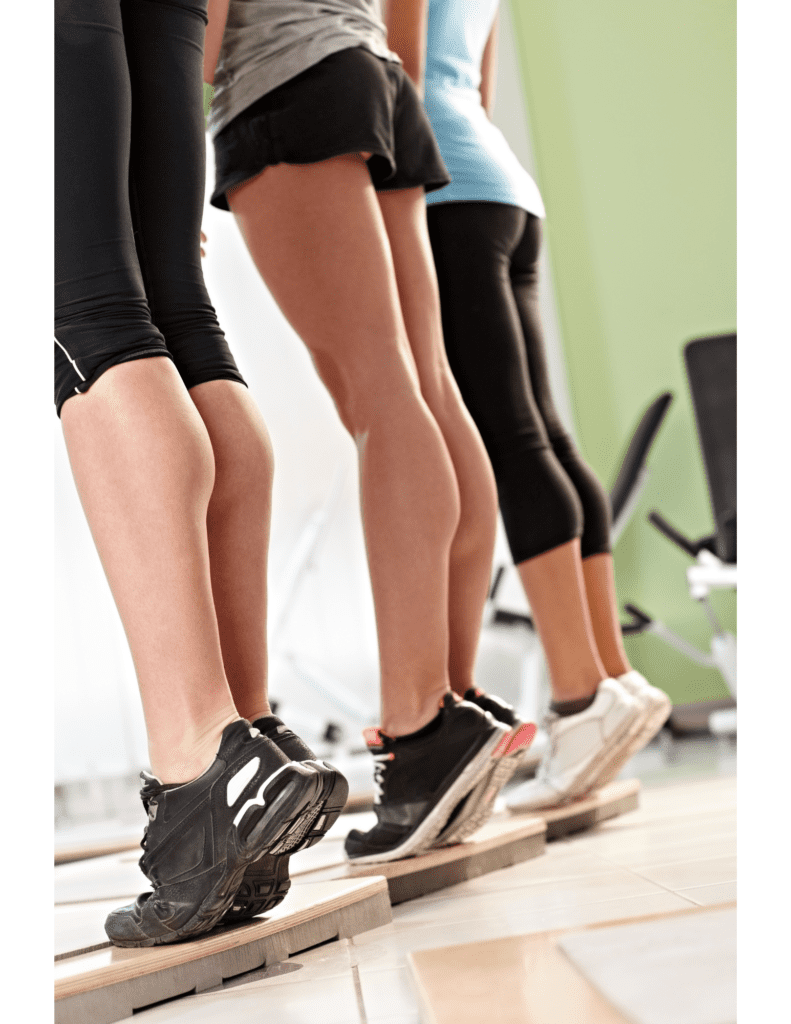Sculpted Calf Muscles
Nice, sculpted calf muscles. We all notice them, and we all want them, right? Of course, we do. After all the calf is the most noticed area of the lower body when you wear a dress, shorts, or a swimsuit.
There are even people who pay money to have calf augmentation surgery just to get those nice, sculpted calves.
The calf muscle is one of the hardest muscles to grow.
Getting a nice, sculpted calf takes work and takes time. It does not happen overnight and can take weeks to accomplish.
The trick is to isolate the calf in your workout routine and do the correct exercises. Doing exercises specifically for the calf gives you a better mind/muscle connection.
This occurs when you focus intently on a target muscle as you contract which leads to bigger gains.
Aside from looking nice, a strong calf also works to push you forward when you walk, run or jump.
The calf supports the weight of the body when you stand and while you actively move. If you are a runner or if you play sports that require jumping, you are working your calves.
However, doing isolated exercises will get your calves stronger. This will enhance your performance for those activities.
Understanding the Calf Muscles

An insight to how the calf is structured may be helpful in understanding the needs of different exercises.
The calf is made up of 3 muscles the gastrocnemius, plantaris, and soleus.
Together these 3 muscles help to plantar flex the foot at the ankle joint.
In other words, they work to lift the heel and point the toes downward.
Strong muscles are needed for this action because the heel needs to be lifting against the whole-body weight when running, jumping, and walking.
The 3 muscles of the calf.
- Gastrocnemius Muscle – This muscle is the most superficial, it is located just under the skin in the back of the lower leg. The gastrocnemius muscle has a very distinct shape and is made up of 2 heads that connect to the inside and outside of the femur, which is your thigh bone. It goes down the back of your leg to your Achilles tendon. The fibers of the muscle run mainly vertical which allows for the rapid and strong contractions needed for running and jumping. Strains to this muscle are common because it connects to both the knee and ankle joint. The gastrocnemius is the muscle that gives your calf its shape.
- Soleus Muscle – This is a very large and powerful muscle that lies under the Gastrocnemius. It is a wide, flat muscle. The soleus muscle starts just below the knee and connects to the Achilles tendon above the heel. It connects your tibia and fibula, which are the lower leg bones together. Contraction of this muscle is important for balance while standing.
- Plantaris – This is a thin long muscle that extends behind the knee and into the back of the lower leg. It is the longest tendon in the human body. A small percentage of people do not have a Plantaris. The Plantaris is the weakest of the three muscles and does not play a big role with the calf. If this muscle ruptures, it can mimic a blood clot.
The Gastrocnemius and soleus have a single, common tendon called the Achilles tendon. This is the thickest tendon in the human body. It attaches the gastrocnemius, soleus and plantaris muscles to the calcaneus (heel) bone.
Calf Exercises You Can Do at Home
It is important to work both the gastrocnemius and soleus muscles in order to get those nice, sculpted calf muscles.
Unfortunately, many people only work one of the muscles or they don’t do any isolation exercises for these muscles leaving them weak and not as sculpted as they could be.
Activating the Soleus Muscle
To activate the soleus muscle, do exercises that include bending your knees while lifting your heels with toes pointing down.
A few examples of exercises for the soleus muscle would be the standing bent knee calf raises, seated calf raise and forward step downs.

Standing Bent Knee Calf Raises
- Start by standing – you may choose to stand by a wall or behind a chair for support
- Bend your knees
- Lift your heels with toes are pointing down – pause and hold the position for a few seconds
- Lower your heels to the floor
- Pause and repeat
Seated Calf Raise
- Start by sitting in a chair or on a weight bench
- Place toes on a weight plate, dumbbells, or step
- Place weights on lap or you can choose to just use body weight
- Lower your heels to the floor, press your toes onto the step and raise your heels toward the sky.
- Lower your heels to the floor to stretch calf
- Pause and repeat
Forward Step Downs
- Start by standing on a step, chair, or bench
- Move one foot off the surface in front of you and lower that foot towards the ground. Bend the leg that is on the surface and lift your heel.
- Bring the foot back to the stair, chair, or bench
- Pause and repeat
Activating the Gastrocnemius Muscle
A few examples to activate the Gastrocnemius muscle, would be standing straight leg calf raise, elevated calf raises, single leg calf raises and jump rope.

Standing straight leg calf raises
- Start by standing with feet forward you can add weights for more resistance
- Lift your heels and point your toes to the floor – pause and hold this position for a few seconds
- Bring heels back to the floor
- Pause and repeat
Elevated calf raises
- Begin by standing
- Place toes on a weight plate, dumbbells, or step
- Lower your heels to the floor, press your toes onto the step and raise your heels toward the sky.
- Lower your heels to the floor
- Pause and repeat
Single Leg calf raises
- Start by standing – you may want to use a wall or chair for stability
- Bend and lift one leg behind you
- Raise the heel of the other foot off the floor with toes pointing down – pause and hold for a few seconds
- Place heel back on the floor
- Pause and repeat
Jump Rope
- Yep, just like it sounds. Take yourself back to your childhood. Get a jump rope and hop up and down on your toes.
Still Not Progressing?
If you are still having difficulty with building those nice, sculpted calf muscles, you may want to look at how you are doing the exercises. Are you sabotaging your workout?
- Go Slow – if you are racing to get the exercise done you may not be getting the results you want. Take your time. Make sure that you are holding the contraction while the heels are elevated to fire that muscle.
- Workout your calves first – do your calf workout first. This way the muscles are fresh, and you will be able to hold them in a flexed position longer.
- Give it time – the calves take time to build up. Don’t expect to see your results in the first week. It could take 6-8 weeks to get the muscle to pop.
- Exercise routinely – try to do your calf exercises 2-3 times per week.
